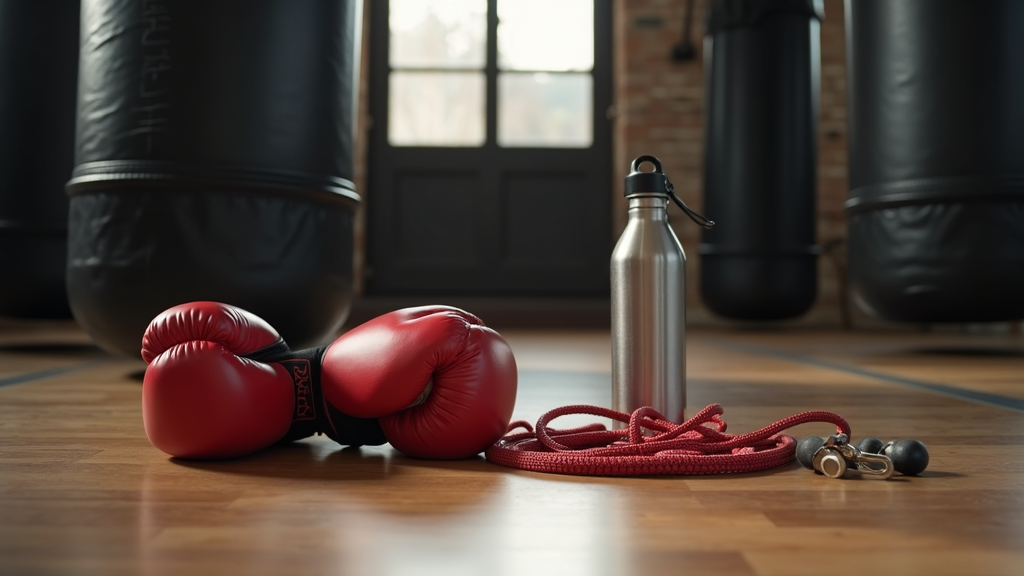Boxing has been getting way more attention lately as a super effective, full-body workout. And for pretty good reason. It’s not just about throwing punches or looking tough in the ring. Boxing brings a mix of cardio, strength, agility, and focus into one session. That’s why so many people are picking it as their top way to stay fit. Here, I’m sharing ten reasons boxing stands out for a total body routine, whether you’re just beginning or want new ways to challenge yourself at the gym.

Why Boxing Delivers a Complete Full-Body Workout
Boxing is a blend of movement, coordination, and muscle engagement from start to finish. Each session pushes you to use your arms, shoulders, legs, and core without a break. Stepping into a boxing class means you’re going to sweat, work every muscle, and burn plenty of calories. This isn’t just good for athletes or fighters; boxing routines can be scaled to suit any fitness level and tweaked to match your pace.
Modern boxing gyms often blend classic techniques with cardio and strength exercises. Whether you’re shadowboxing, hitting the bag, or doing combo drills, you’re constantly mixing up which muscle groups you put to work. That’s super effective for targeting different parts of your body and keeping things interesting. Boxing also gets your heart rate up and improves your reflexes as your skills build up over time—a big win for anyone wanting a next-level cool full body routine.
What Makes Boxing So Effective?
Looking at the science behind boxing, you’ll see that boxers usually rank high in cardiovascular fitness and muscle endurance. One 2017 study published in the British Journal of Sports Medicine found that boxers consistently displayed great aerobic and anaerobic performance. This helps explain why sessions feel intense but rewarding. The mixing movements—from footwork drills to throwing punches—help build functional strength and increase coordination. Boxing trains power and speed, but it doesn’t miss out on flexibility or balance either.
- Functional Movement: Every move in boxing, from ducking to sliding, is built around natural movement patterns that you’ll use in daily life or activities.
- High Calorie Burn: Intense rounds torch calories quickly; studies suggest you can burn anywhere from 400 to 700 calories or more in a typical hour-long boxing workout, depending on your size and intensity level.
- Low Impact Modifications: Lots of boxing combinations can be done at a lower pace, making it friendlier for a wide age range and those coming back after an injury (always with good coaching, of course).
10 Reasons Why Boxing Is One of the Best Full-Body Workouts
- Total Body Engagement
Each punch, block, and slip draws on a whole crew of muscle groups at once. You work your shoulders, back, legs, glutes, arms, and—something often missed—your core. Boxing footwork especially challenges your lower body, while combo punching gives your upper body all the action too. - Serious Cardio Boost
Boxing keeps your heart pumping nonstop, even with quick rest breaks. Fast rounds help improve cardiovascular endurance and strengthen heart health over time. Jumping rope, still a staple of boxing warm-ups, gets your heart rate going before you even touch the bag. - Improved Coordination and Reflexes
Boxing is a real-life puzzle your body solves on the fly. You learn to work your feet with your hands, read your target (or time that heavy bag), and react with lightning decisions. That combo helps your reaction time and polishes motor skills on both sides of the body. - Core Strength Builder
Strong punches start at the core, not just your arms. Every boxing motion—from pivoting to striking—trains your abs, obliques, and lower back. Footwork drills and rotating with punches really challenge your midsection and build stability. - Stress Relief
Hitting a bag after a stressful day? There’s evidence that physical activity like boxing can lower stress and boost your mood thanks to feel-good endorphins. Punching it out in a structured way is fantastic for working through mental tension. - Strength Training Without Heavy Weights
Boxing builds muscle through resistance against the bag or pads and through bodyweight drills like squats, push ups, and planks. Many classes toss in medicine balls, bands, or light dumbbells for an extra muscle kick. - Better Agility and Balance
Staying light on your feet, mixing up angles, and holding your stance during a boxing round means your stabilizer muscles get a real challenge. This focus on movement not only helps in boxing but also spills into sports and everyday stuff. - Fat Loss and Muscle Definition
Boxing’s high energy style helps burn fat quickly and shapes lean muscle. Intervals of punching, on-the-spot sprints, and dynamic drills keep you in the fat-melting zone well beyond what steady-state cardio offers. - Boosts Mental Toughness
Boxing is more than a body workout—it changes your mindset. Learning combos, shutting out distractions, and powering through tough rounds deliver a strong motivator and help build confidence both in and out of the gym. - Workout Variety and Fun
Boxing workouts don’t often feel the same. You can try shadowboxing, mitt work, bag rounds, defense drills, or circuit training all in one session. There’s always a combo, drill, or skill to pick up; getting bored isn’t likely.
Getting Started: Boxing for Beginners
If you’re new to boxing, joining your first class or checking out online drills feels exciting but honestly a little intimidating at first. Boxing gyms usually run intro sessions where coaches break down basic moves and stance. Most will have you start with jabs, footwork, and jump rope. That’s the easiest way to see just how much energy boxing really takes—even in short bursts.
At home, workouts are a good starting point too. Countless shadowboxing routines and bodyweight circuits online require no extra equipment aside from maybe a jump rope or light hand weights. As your skills grow, adding hand wraps, gloves, or a heavy bag will help deepen your training and technique. Progress feels great and keeps you motivated.
Things to Consider Before Starting Boxing Workouts
Getting into boxing for the first time? Here’s what’s useful to know before slipping on your gloves:
- Proper Technique: Good form powers up your workout and helps avoid injuries. Don’t hesitate to ask coaches for input—it really makes a difference.
- Wrapping Hands: Wraps support your wrists and knuckles, offering key protection when hitting pads or bags.
- Warm Up and Cool Down: Boxing can be tough on your body, so warming up your joints and cooling down matters a lot.
- Equipment Choices: Essential gear is simple: gloves (12–16 oz for training), wraps, and a jump rope get you started. As your interest builds, you can pick up more advanced gear.
- Stay Hydrated: Boxing will have you dripping sweat; keeping a water bottle close is a must, especially during intense rounds.
Wrist and Joint Safety
Because boxing puts stress on your wrists, elbows, and shoulders, punching the right way really helps comfort and injury prevention. Lightweight gloves and wraps are a good help, but listening to your body is always key. If something doesn’t feel right, slow down and double-check your form. Recovery is as vital as training don’t skip out on it. Take breaks when needed, stretch, and always put your health first.
Advanced Boxing Tips and Tricks
When you’ve locked down the basics, try stepping up your routine with some advanced tactics:
Shadowboxing for Form: Practicing moves without a bag helps fine-tune your technique, balance, and speed. Shadowboxing in front of a mirror gives instant feedback, helping you pick up on and fix sloppy habits.
Interval Training: Boost your progress by toggling between short, max-effort bursts (punch combos, footwork sprints) and quick active recovery (jog or shuffle). Intervals ramp up cardiovascular gains and help burn fat efficiently.
Mix Up Your Stance: Practicing both your usual and non-dominant stance builds muscle balance and heightens coordination. It’s a new kind of challenge and can inject some variety into your routine.
Partner Drills: Find a workout buddy and try target mitt drills or light sparring to work on timing, reading movement, and adapting quickly. Training with someone helps develop communication and ups the fun factor as well.
How Real People Use Boxing for Fitness
Boxing isn’t just for would-be champs. I’ve seen a wide mix of people—college students, office workers, and busy parents—jump in and see real improvements in fitness, confidence, and even social life through group classes. One friend took up boxing after hitting a plateau with their usual gym routine and found their stamina and focus skyrocketed in just a few months. Boxing helped them get leaner, more energized, and gave them a new way to unwind.
- Cardio for Heart Health: Rounds of bag work, pad drills, and jump rope led to big improvements in resting heart rate and stamina for several people I know. They found day-to-day activities became so much easier.
- Stress Management: One regular told me boxing beat every other stress-buster for him. He felt he could really let go of anxiety by throwing some controlled punches.
- Weight Management: Boxing’s mix of intense intervals and strength moves helped many shed pounds and tone up, maintaining muscle rather than just dropping weight.
- Confidence Boost: As your skills and strength go up, so does your confidence. That sense of self-assurance shows up in other parts of your life too.
Frequently Asked Questions
Here are a few of the most common questions I hear about boxing as a full-body workout:
Question: How often should I do boxing workouts to see results?
Answer: Hitting it two or three times a week is usually enough for most people to see progress in a few weeks, especially if you pair it with a balanced diet and some general strength work.
Question: Can I do boxing workouts at home?
Answer: Definitely. Shadowboxing, skipping rope, and bodyweight routines all fit into a small space. Bringing in a heavy bag or some light weights gives your routine an edge, but aren’t necessary for starting out.
Question: Is boxing safe for beginners?
Answer: Boxing is safe as long as you spend time learning the basics, move at your own speed, and use proper protection. If you have health concerns, check with a professional before you begin.
Whether you’re itching to switch up your workouts, crank up calorie burn, or just want something fresh and challenging, boxing delivers benefits you’ll notice from the very first class. There’s something awesome about getting stronger, sweating it out, and mastering new skills, and that feeling keeps you hooked for the long run.
Thanks for checking this post out feel free to to leave a comment, ask questions and be sure to look on the other posts for everything fitness.


